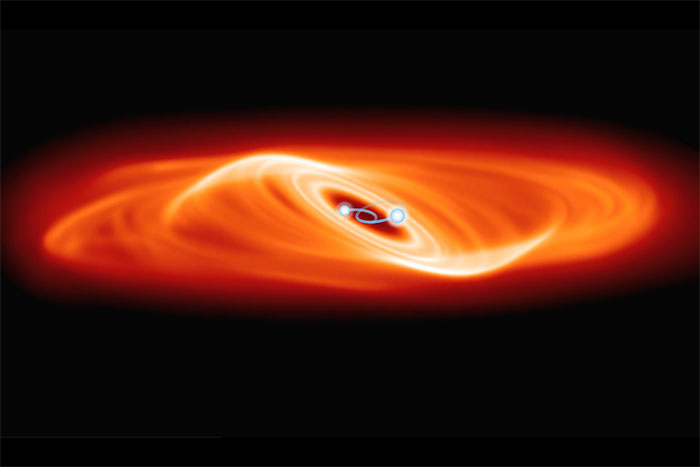A scientist has stated that two binary star systems located 3,000 to 10,000 light-years from Earth are significant for understanding planet formation.
An international team of astronomers has identified two new examples of rare binary star systems, and their scientific report has just been published in the Astrophysical Journal Letters.

The researchers have named the two newly discovered binary star systems Bernhard-1 and Bernhard-2. (Image source: utoronto.ca)
Binary stars consist of a system with two central stars that orbit each other around their common center of mass.
According to Zhu Wei, a scientist from Tsinghua University and the leader of the research team, the two newly discovered binary star systems are named Bernhard-1 and Bernhard-2. They are surrounded by an unusual disk of gas and dust, positioned at a 45-degree angle to the orbits of the central stars.
Protoplanetary disks—disks containing dense gas that rotate around a newly formed young star—typically lie in the same orbital plane as the stars, similar to how most planets and moons in the Solar System share the same orbital plane.
However, the newly discovered binary star systems are rare, featuring a disk that is tilted at a 45-degree angle to the orbital plane of the stars.
According to Zhu Wei, this star-shaped disk wobbles like a top due to its tilt. He further explained that during this wobbling motion, the disk can move between Earth and the binary stars over a period of several decades, causing the brightness of the binary stars to change frequently.
When observed from Earth, these binary star systems dim when one of the stars in their system moves behind the protoplanetary disk.
The visibility will improve as the brightness of the binary star system returns to normal. According to the research findings, every 192 days, Bernhard-1 will dim for 112 days, while Bernhard-2 will dim for 20 days after each 62-day cycle.
Zhu Wei stated that these binary star systems are located 3,000 to 10,000 light-years from Earth, and their discovery is very important for understanding planet formation.


















































